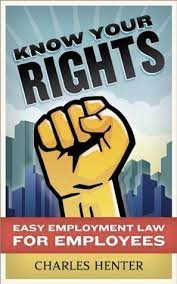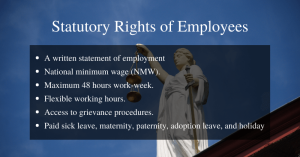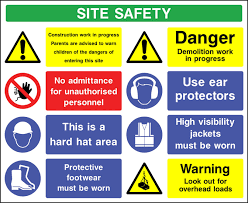An understanding of employment law is the cornerstone of workplace safety. Understanding your rights as an employee and obligations owed to your employer are both

key parts of understanding employment law. Employment laws cover things such as contracts, wrongful terminations, noncompetition agreements, wage and hour laws (including minimum wages), discrimination laws ( including minimum wages), leave requirements whistleblower protections and unemployment insurance policies.
State and federal governments both have laws in place that protect employees in the workplace, such as anti-discrimination laws that forbid employers from making decisions based on an employee’s race, religion, sex (including gender identity sexual orientation and pregnancy), national origin disability age 40 or above citizenship status or genetic information.
Employment law also covers workers’ health and safety issues, with laws prohibiting hazardous chemicals and mandating employers to create safe working environments for employees. Furthermore, such laws protect an employee’s right to a reasonable working time/rest period arrangement as well as provide sanitary facilities as well as inform about issues of health and safety.
Employers’ responsibility for employee health and safety starts with adhering to the Occupational Health and Safety Act, which dictates that everyone connected to a work site assume responsibility for both their own well-being as well as those around them – this obligation applies equally to supervisors, employees, contractors, subcontractors and suppliers.
The Occupational Health and Safety Act mandates that every worker has the right to know about risks to their personal health and safety related to work, including exposure to chemicals or radiation. This right extends even to family members of an employee working on site.
Employers must be able to demonstrate that workers’ health and safety are integral to the operations of their business before dismissing them for reasons not related to their work. When placing restrictions on an employee, employers must follow procedures set out by law.

Recent legislation has introduced various labour laws designed to safeguard employee rights and interests, such as providing guaranteed minimum income levels, safe working conditions and fair treatment. As a result, illegal dismissals have reduced, barring misconduct or operational reasons, but abuse of strike rights and unfair labor practices remain widespread. Workers also have the right to form unions and bargain collectively with their employers. These rights are safeguarded under the National Labor Relations Act and similar state laws, though not all workers are covered by them; some public sector employees such as school teachers and county social workers for instance are exempt. Many other workers do not come under their purview at all – for instance in France when Lionel Jospin’s socialist government implemented the 35-hour workweek in 2000 it prompted protests from students and trade unions alike.
Employment law is an area of law which defines how employees and employers interact in their professional environments, including how employees may be hired or dismissed, what minimum conditions must be met in order to work safely and fairly, etc.
As most US workers fall under “at-will” employment arrangements, this means employers can terminate an employee at any time for any reason (or no reason at all). But there are laws protecting employees against discrimination on grounds such as race, religion, sex, national origin, age (40 or over), gender identity or disability; additional provisions prohibit retaliation when reporting illegal activities to authorities as well as noncompetition agreements, wage/hour requirements, sick leave requirements and whistleblower protections are in place.

Though federal employment laws exist, many of them are created and enforced at a state level, leading to some overlap in laws among states. Therefore, it’s essential that you know exactly which laws pertain to your own state.
Some states prohibit employers from refusing to hire applicants who have filed lawsuits against the company, and many also provide for employees to take up to 12 weeks unpaid leave for medical conditions and care of family members, or for voting or jury duty activities that are legally protected activities.
Many states have laws requiring employers to provide reasonable accommodations for employees with disabilities, unless doing so would create significant difficulty or expense for the employer. Some accommodations can be as straightforward as providing sign language interpreter for deaf employees while other solutions might involve changing an employee’s job to one more suited to his/her abilities.
Laws exist that prohibit the disclosure of an employee’s wage information outside of pay purposes or when required by state and federal laws. Employers also need to inform employees about their right to overtime payments.
The law also covers workplace safety concerns, such as protecting certain areas from dangerous materials and maintaining adequate ventilation. Furthermore, companies are required to provide training and safety equipment to their employees as well as keep records of any injuries occurring on the job site.